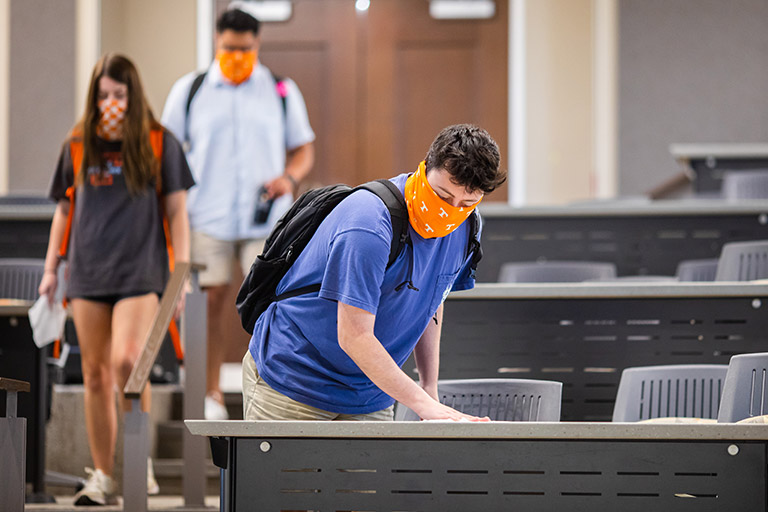
Disease-resistant buildings could mean safer mass gatherings in public places.
Professor Qiang He and Assistant Professor Shuai Li have had a string of research collaborations that could greatly reduce the impact of COVID-19 and other pathogens within the built environment.
Now, with two more grants from the National Science Foundation (NSF), they continue their mission of researching disease-resistant infrastructure solutions.
One of those grants, “Toward Disease-Resistant School Communities by Reinventing the Interfaces among Built Environments, Occupants, and Microbiomes,” which is a one-year, $150,000 project that leverages the NSF’s big idea: “Harnessing the Data Revolution.”
“The goal of this project is to develop intelligent technologies to model and monitor the environment-occupant-microbiome interactions in school communities to help school managers prevent the spread of infectious diseases,” said He. “We hope to lay a computational foundation for design and operational control by linking microbial contamination patterns and transmission pathways with quantifiable design attributes and operation paradigms.”
The other recent grant, “Bio-socially Adaptive Control of Robotics-Augmented Building-Human Systems for Infection Prevention by Cybernation of Pathogen Transmission,” is a 3-year, $1.2 million study that aims to develop new techniques to monitor and predict pathogen spreading, automate building ventilation, enable intelligent recognition of contaminated objects, and perform precision disinfection to reduce pathogen transmission through air circulation and surface contacts.
With this longer-term study, they intend to advance the understanding of linkages among physical, biological, and social processes that drive the dynamics of human-pathogen interactions in building environments, and to develop a novel cyber-physical system of integrated monitoring, building control, robot adaptation, and human-in-the-loop interactions to reduce the transmission of infectious pathogens.
“This research pioneers a novel approach that integrates building information modeling, privacy-preserving internet of things sensing, spatiotemporal molecular and metagenomic sequencing, and machine learning to map building-human-pathogen interactions for predicting contamination and infection risks at multiple spatiotemporal scales,” said Li. “New methods will be developed to connect and manage the buildings, occupants, and robots to reduce pathogen burdens.”
Findings from this project will also guide occupants and facility managers to develop and implement effective behavioral interventions and hygiene practices. If successful, this research will revolutionize the control of built environments to enable protection against infectious diseases, which will have vast public health and economic benefits to the nation.